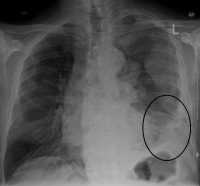Mesothelioma is a devastating cancer linked to asbestos exposure, affecting many each year. Victims often face overwhelming medical and financial burdens, making legal avenues a crucial consideration. Understanding the available options can empower patients and their families to seek justice and compensation.
Mesothelioma is a rare but aggressive form of cancer primarily caused by prolonged exposure to asbestos fibers. This disease often manifests years after initial exposure, leaving many unaware of its impending threat. As the medical community continues to search for effective treatments, understanding the legal pathways becomes essential for patients seeking compensation. Legal recourse offers a means to address not only the medical expenses but also the emotional and financial turmoil faced by affected individuals and their families. Engaging with top rated mesothelioma lawyers can significantly enhance your ability to understand and pursue these legal avenues effectively.
(more…)
Lung Cancer / 05.02.2025
Importance of Early Detection in Treating Squamous Cell Carcinoma Lung Cancer
One of the leading causes of cancer-related deaths worldwide is lung cancer. Among the various types of lung cancer, squamous cell carcinoma is a common type that usually develops in the central part of the lungs, commonly in the bronchi, and is majorly caused by smoking. Though any type of cancer diagnosis can be overwhelming, early detection can be a crucial factor as it relates to treatment options and overall survival rates. Let's learn about the role early detection plays below.
Why is early detection important?
No one likes to think of cancer, not to mention getting tested for it. However, when it comes to this type of cancer, early detection increases the odds of a successful treatment. Let's find out why:- More treatment options: When this cancer is diagnosed early, patients have more options available, such as radiation, targeted therapy, and surgery. When it is detected at an advanced stage, the treatments are often limited to immunotherapy and chemotherapies, which might not be as effective in removing the disease.
- Increased survival rates: Early-stage lung cancer has a better prognosis than advanced-stage diseases. According to research, the five-year survival rate of cancer that has not spread beyond the lungs (localized cancer) is around 63% as against 7% when it has spread to distant organs. Catching squamous cell carcinoma early can mean the difference between effective treatment and a tougher battle.
- Better quality of life: There is no doubt that cancer treatment can be quite tough. However, when this cancer is diagnosed early, the treatment is usually less aggressive, resulting in fewer side effects and a better overall quality of life.
Author Interviews, Cancer Research, JAMA, Lung Cancer, NIH, Race/Ethnic Diversity, Stanford / 01.11.2023
Lung Cancer: Stanford Risk-Based Model Reduces Screening Disparities
MedicalResearch.com Interview with:
Summer S Han, PhD
Associate Professor
Quantitative Sciences Unit
Stanford Center for Biomedical Informatics Research (BMIR)
Department of Neurosurgery and Department of Medicine
Department of Epidemiology & Population Health (by Courtesy)
Stanford University School of Medicine
Dr. Eunji Choi PhD
Instructor, Neurosurgery
Department: Adult Neurosurgery
Stanford University School of Medicine
MedicalResearch.com: What is the background for this study?
- Lung cancer is the leading cause of cancer death in the United States, killing about 127,000 people annually, but it can be treatable if detected early.
- Low-dose computed tomography, or CT scan, has been shown to significantly reduce the number of lung cancer deaths. But because the radiation delivered by the scans can be harmful (they use on average about 10 times the radiation of standard X-rays), only those people at relatively high risk for lung cancer should be screened. The two biggest risk factors for lung cancer are exposure to tobacco smoke and age. Current national guidelines that rely on age and smoking exposure to recommend people for lung cancer screening are disproportionally failing minority populations including African Americans, according to a new study led by researchers at Stanford Medicine.
- In 2021, the national guidelines by the U.S. Preventive Services Task Force (USPSTF) issued revised recommendation guidelines on lung cancer screening, lowering the start age from 55-year to 50-year and the smoking pack-year criterion from 30 to 20, compared to the 2013 USPSTF criteria. In comparison to the 2013 criteria, the new modifications have been shown to lessen racial disparities in screening eligibility between African Americans and Whites. However, potential disparities across other major racial groups in the U.S., such as Latinos, remains poorly examined.
- Meanwhile, risk prediction model assesses a person’s risk score of developing an illness, such as lung cancer.
ASCO, Author Interviews, Cancer Research, Lung Cancer, University of Pennsylvania / 05.06.2023
Penn Study Addresses Duration of Immunotherapy After Non Small Cell Lung Cancer
MedicalResearch.com Interview with:
Lova L. Sun, MD, MSCE
Medical Oncology
Assistant Professor of Medicine
Hospital of the University of Pennsylvania
MedicalResearch.com: What is the background for this study? What are the main findings?
Response: An common clinical question for patients with metastatic non-small cell lung cancer with long-term response to immunotherapy-based treatment is how long to continue treatment. The major clinical trials stopped immunotherapy at a maximum of 2 years, but in clinical practice many patients and clinicians continue treatment beyond this time point.
We conducted a retrospective study of lung cancer patients across the US with long-term response to immunotherapy, to compare survival between those who stopped treatment at 2 years vs those who continued beyond 2 years. We found that there was no statistically significant difference in survival between the two groups.
(more…)
Lung Cancer, Race/Ethnic Diversity / 02.05.2023
Disparity and Diversity in Non-Small Cell Lung Cancer Imaging and Genomics
MedicalResearch.com Interview with:
Andres Kohan MD
MHSc. in Translational Research
Joint Department of Medical Imaging
University Health Network
Mount Sinai Hospital and Women's College Hospital
University of Toronto
Toronto, Canada
MedicalResearch.com: What is the background for this study?
Response: Inequalities in access to healthcare for oncologic patients and its impact on quality of life and survival have been previously described. However, there also exists reports pointing out that when factors contributing to socioeconomic inequality are accounted for differences in outcome between races remain identifiable.
In this context, we sought to evaluate the presence of disparities in imaging in a selected population of patients with non-small cell lung cancer (NSCLC) within AACRs Project GENIE Biopharma Consortium (BPC) dataset v 1.1. This database is the largest in existence that has not only the patients’ imaging and clinical staging/follow-up, but also the genetic profile of the patients’ tumors.
(more…)
Author Interviews, Cancer Research, Lung Cancer, NYU / 14.11.2022
NYU Oncologist Discusses Lung Cancer During Awareness Month
MedicalResearch.com Interview with:
Dr. Sally Lau MD
Medical oncologist, NYU Langone’s Perlmutter Cancer Center
Assistant professor of medicine
NYU Grossman School of Medicine
MedicalResearch.com: How big is the problem of lung cancer?
Response: Amongst all cancer types, lung cancer is the number 1 killer in the US.
(more…)
Author Interviews, Brigham & Women's - Harvard, Cancer Research, JAMA, Lancet, Lung Cancer, Medical Imaging, Technology / 07.09.2022
Lung Cancer: Human-AI Collaboration Can Accelerate Time to Treatment
MedicalResearch.com Interview with:
Raymond H. Mak, MD
Radiation Oncology Disease Center Leader for Thoracic Oncology
Director of Patient Safety and QualityDirector of Clinical Innovation
Associate Professor, Harvard Medical School
Cancer - Radiation Oncology, Radiation Oncology
Department of Radiation Oncology
Brigham and Women's Hospital
MedicalResearch.com: What is the background for this study? What is the algorithm detecting?
Response: Lung cancer, the most common cancer worldwide is highly lethal, but can be treated and cured in some cases with radiation therapy. Nearly half of lung cancer patients will eventually require some form of radiation therapy, but the planning for a course of radiation therapy currently entails manual, time-consuming, and resource-intensive work by highly trained physicians to segment (target) the cancerous tumors in the lungs and adjacent lymph nodes on three-dimensional images (CT scans). Prior studies have shown substantial variation in how expert clinicians delineate these targets, which can negatively impact outcomes and there is a projected shortage of skilled medical staff to perform these tasks worldwide as cancer rates increase.
To address this critical gap, our team developed deep learning algorithms that can automatically target lung cancer in the lungs and adjacent lymph nodes from CT scans that are used for radiation therapy planning, and can be deployed in seconds.
We trained these artificial intelligence (AI) algorithms using expert-segmented targets from over 700 cases and validated the performance in over 1300 patients in external datasets (including publicly available data from a national trial), benchmarked its performance against expert clinicians, and then further validated the clinical usefulness of the algorithm in human-AI collaboration experiments that measured accuracy, task speed, and end-user satisfaction.
(more…)
Author Interviews, Cancer Research, COVID -19 Coronavirus, Lung Cancer, Surgical Research / 21.06.2022
Mt Sinai Researchers Find Sharp Drop in Early Lung Cancer Diagnoses During COVID-19 Pandemic in NYC
MedicalResearch.com Interview with:
Emanuela Taioli, MD, PhD
Director, Institute for Translational Epidemiology
Professor, Population Health Science and Policy
Professor, Thoracic Surgery
Icahn School of Medicine at Mount Sinai
New York, NY
MedicalResearch.com: What is the background for this study?
Response: NYC experienced a halt on all elective care from March 22 to June 8, 2020, provoking reduced cancer screening rates, and delayed cancer care and treatment.
We wanted to quantify the effect of the “pause” on cancer stage at diagnosis using lung cancer as an example of a condition where early diagnosis can dramatically modify survival.
(more…)
Author Interviews, Cost of Health Care, JAMA, Lung Cancer, Stanford, USPSTF / 24.10.2021
Lung Cancer Screening: Cost Effectiveness of USPSTF Guidelines
MedicalResearch.com Interview with:
Summer S Han, PhD
Assistant Professor
Quantitative Sciences Unit
Stanford Center for Biomedical Informatics Research (BMIR)
Neurosurgery and Medicine
Stanford University School of Medicine
Stanford, CA 94304
MedicalResearch.com: What is the background for this study?
Response: The US Preventive Services Task Force (USPSTF) issued their 2021 recommendation on lung cancer screening lowering the start age from 55 to 50 years and the minimum pack-year criterion from 30 to 20, relative to the 2013 recommendations. Although costs are expected to increase with the expanded screening eligibility, it is unknown if the new guidelines for lung cancer screening are cost-effective.
(more…)
AACR, Author Interviews, Cancer Research, Genetic Research, NIH / 23.04.2021
Mesothelioma: Prognostic Signature of 48 Genes Identified
MedicalResearch.com Interview with:
Nishanth Ulhas Nair, Ph.D.
Affiliation: Staff Scientist at Cancer Data Science Laboratory, Center for Cancer Research
National Cancer Institute (NCI), National Institutes of Health (NIH)
Bethesda, Maryland, USA. Date: April 22, 2021
Dr. Raffit Hassan and Dr. Eytan Ruppin at the National Cancer Institute (NCI) are the senior authors of this study.
MedicalResearch.com: What is the background for this study?
Response: Malignant mesothelioma is an aggressive cancer with limited treatment options and poor prognosis. An in-depth knowledge of genetic, transcriptomic and immunogenic events involved in mesothelioma is critical for successful development of prognostics and therapeutic modalities. In this study we aim to address this by exploring a new large scale patient tumor dataset of 122 mesothelioma patients, called NCI mesothelioma patient data, along with their genomic, transcriptomic, and phenotypic information. Unlike previous large-scale studies which have been focused on malignant pleural mesothelioma patients, our dataset contains an approximately equal representation of malignant pleural and peritoneal mesothelioma patients which allows to identify any differences between them. (more…)









